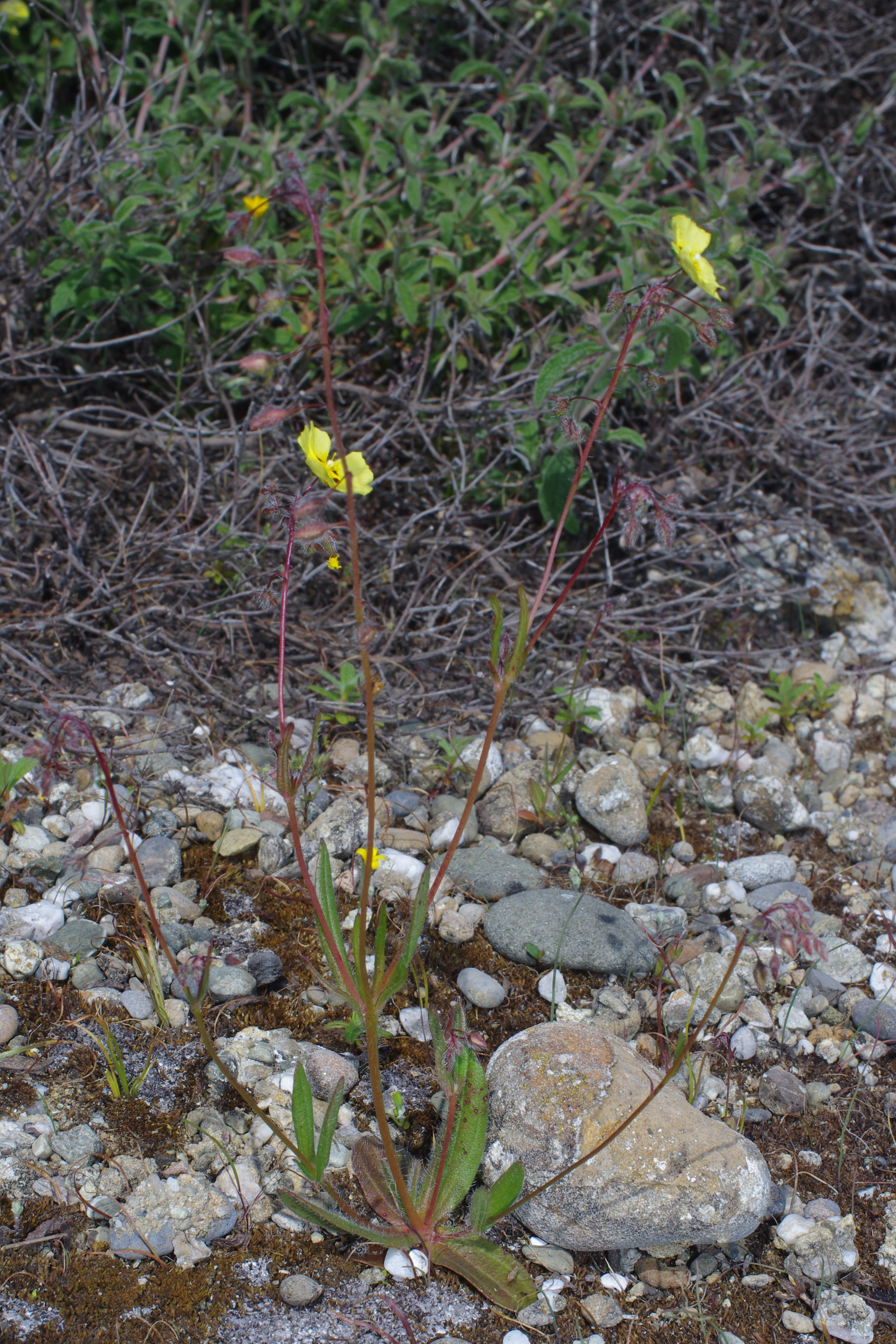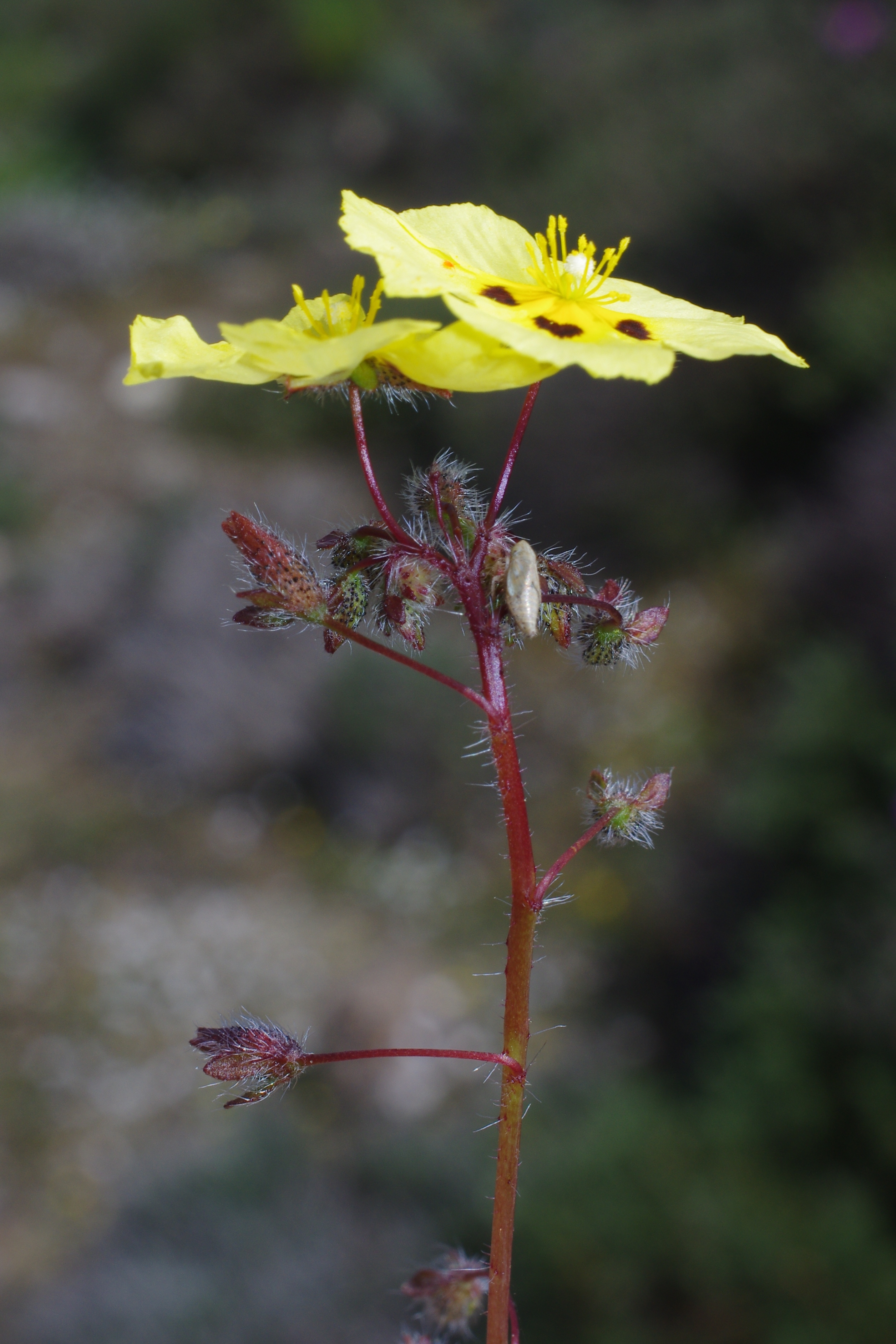Tuberaria guttata (L.) Fourr.
Synonymy

Distribution
GR(IoI NPi SPi Pe StE EC NC NE NAe WAe Kik KK EAe)
Greece (East Aegean islands present; East Central Greece present; Ionian Islands present; Kiklades present; Kriti and Karpathos present; North Aegean islands present; North Central Greece present; North Pindos present; North-East Greece present; Peloponnisos present; South Pindos present; Sterea Ellas present; West Aegean islands present)
Notes
Very variable with respect to dimension and coloration of petals, pollination biology (see Vierhapper 1914a: 469-470), infraspecific polyploidy (2n = 24, 36, 48), hairiness of stems, pedicels, sepals and capsules, and presence or absence, size and duration of a basal leaf rosette (see also Strid 2016a: 235). Both cross-pollinated and self-pollinated plants occur, but neither pollination type nor ploidy level are linked to a vicariant chorology or a genetically fixed differentiating combination of morphological traits. Moreover, a strong habitual and morphological plasticity even within local populations, induced by environmental factors such as water and nutrient supply, might blur the quantitative key characters of floral and vegetative organs. Therefore, the rank of subspecies or even of sympatric microspecies alongside T. guttata, viz. T. lipopetala (following Greuter & al. 1984: 330) and T. plantaginea (following Gallego in Castroviejo & al. 1993: 357) seems taxonomically overrated and at most varietal rank appropriate, respectively (i.e., var clandestina (Vierh.) Davis & Coode for cleistogamous plants, var. plantaginea (Willd.) Grosser for plants with enlarged basal rosette leaves, and var. eriocaulon (Dunal) Grosser for patent-hairy plants).
Specimens
| Country | Date | Collector + collecting number | Herbaria | Type | Scan | Derivatives | |
|---|---|---|---|---|---|---|---|
| Greece | 2017-04-17 | Willing,R. & Willing, E. 275861 | B | ||||
| Citation: Greece, Lassithi, W Armeni, 35°4'27.984"N, 26°5'2.004"E, 17 Apr 2017, Willing,R. & E. Willing 275861 (B B 10 0732378) Specimen summary: B B 10 0732378 Preferred stable URI: http://herbarium.bgbm.org/object/B100732378 | |||||||




